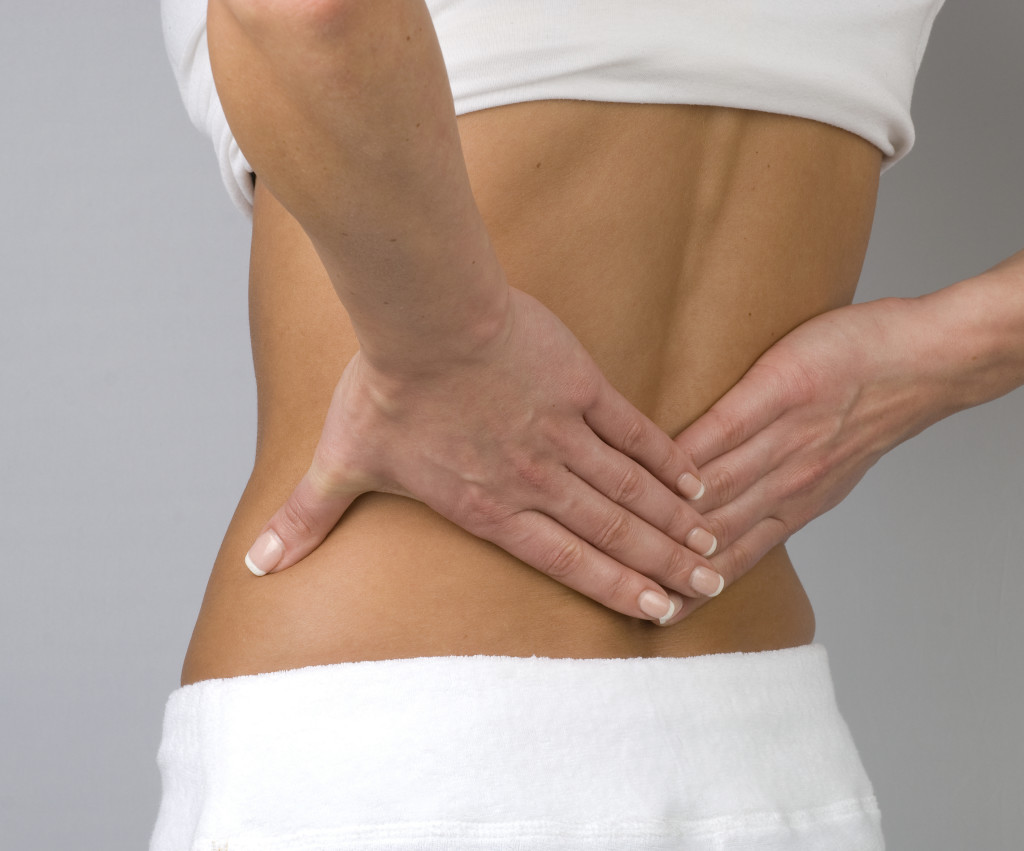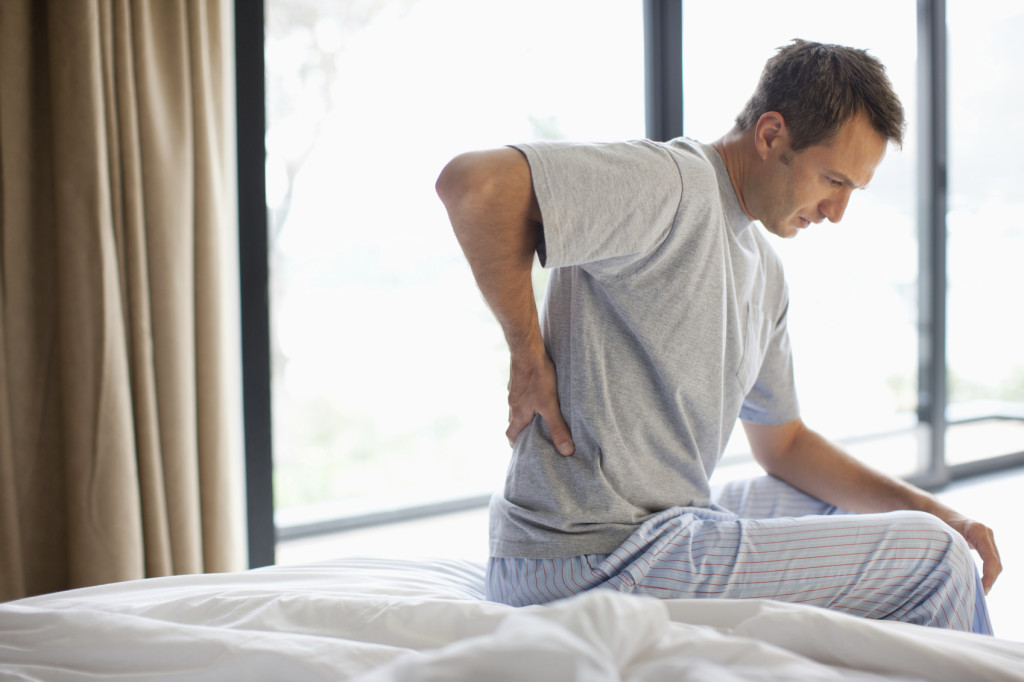How Superior/Inferior Hypogastric Plexus Injections Treat Pain
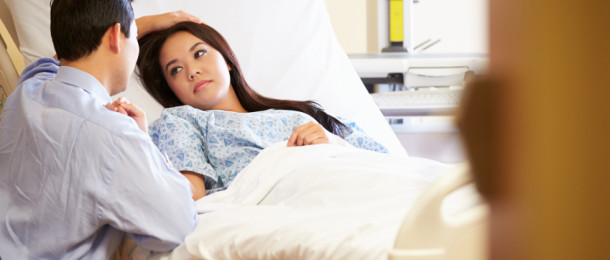
Patients who suffer from chronic pain often are unable to live normally or carry out their typical daily routines. They must take time out of each day to take medication or to rest because of the amount of suffering that their pain causes them.
When you want to get back to enjoying life without being dependent on prescription medications, you may be willing to try treatments like superior/inferior hypogastric plexus injections. Before you agree to this treatment, however, you may want to know more about why it is used today to address a variety of causes of chronic pain.
Finding the Source of Your Chronic Pain
You may know that pain in your body is caused by some sort of trauma one or several of your nerves. When the nerves are irritated or injured, they create pain that can range in intensity from minor to severe.
Despite being in severe pain, however, you may be unable to tell which nerve is bothered and which ones are functioning normally. Likewise, your doctors may be unable to pinpoint the cause of your pain without first performing diagnostic tests. Once they know what nerve or group of nerves is irritated or hurt, they can devise the best medical treatment for you.
Along with taking x-rays or MRIs of your body, your doctors may perform tests that involve injecting the nerves in your spinal cord. If the pain stops once the targeted nerves are injected, your doctors can determine better from what illness or condition you may suffer.
The idea of having your nerves in your spinal column injected with needles can sound frightening. However, doctors use ultrasounds or sonography to guide the needle safely into your spine so that the risk of injury is reduced. You will be placed on your stomach so that you are lying face down on the table or gurney. It is important that you remain as still as possible during the procedure.
Stopping Pain with Superior/Inferior Hypogastric Plexus Injections
Along with using injections to find the source of your chronic pain, doctors can use them to stop the pain at its source. Once they know what nerves are bothering you, your physicians can then inject the nerves with medication that will ease the irritation, inflammation, and injury that causes you such distress.
Like the diagnostic injection procedure, you must lie still so that your medical team can evaluate and treat you carefully. You also may be required to stay in the hospital or medical clinic for evaluation afterward so that your doctors know if the treatment worked or if you are still in pain. You also may be required to walk without help from a nurse afterward so that they know that your spinal column was not adversely affected by the injections.
Many patients experience long-lasting relief with this kind of medical treatment. You may no longer have to take prescription medications to manage your pain. You likewise may be able to move around and carry out your normal routine without experiencing discomfort or pain.
9 Ways to Minimize Back Pain at Your Desk
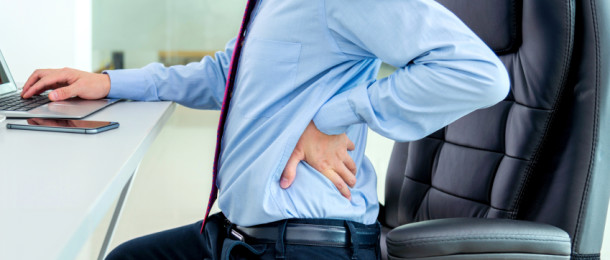
Given the data, it’s fair to say that to the majority of America’s working populace, sitting is somewhat of a natural state. US News notes that over 85 percent of American workers remain seated for their jobs, and PR Newswire discovered in a recent survey that the average American spends 13 hours a day sitting.
While it’s a natural resting state for nearly everyone in the Western world, WebMD shows that sitting that much – especially when paired with bad posture and a lack of exercise – is among the primary lifestyle culprits behind back pain.
While ridding yourself of that pain is not exactly a walk in the park, here are nine scientifically-proven ways to minimize back pain, strengthen your musculature, and avoid further damage caused by improper posture.
Remind Yourself to Sit Straight
As new evidence and research into bad posture and lower back pain comes to light, countless ways to develop a better posture at work have been developed. Any one of them can do you a world of good – consider installing an hourly reminder to tell you to keep your back straight.
Alternatively, certain devices have been developed to remind you not to slouch, such as the Lift featured on The Verge. Ergonomic chair designs, and even standing chairs, are also a viable option to minimize back pain at work.
Your Phone May Be Causing You Back Pain
The majority of us tend to face down and slouch when viewing our phones, and research shows that many Americans spend several hours a day looking at their mobile devices – 4.7 hours a day, as per Digital Trends.
A fix to this may involve cutting down on your phone time, utilizing a Bluetooth headset to communicate, or reminding yourself to hold your phone up as often as possible, resting your arm on a table or desk.
Remove the Chair
One of the more radical options to minimize back pain whilst building a stronger back is to, as much as possible, avoiding sitting in a chair. Instead, prepare a large cushion and sit on the floor, or sit on a sofa with your legs crossed.
A systematic literature review of several studies shows that sitting at work specifically does not equate to lower back pain. Instead, a common cause, as per the NIH, is an aging and sedentary body.
Avoiding the chair can help you unconsciously strengthen and stretch your posterior musculature. Mark Sisson at Mark’s Daily Apple makes note of this, offering alternatives such as cross-legged positions, and the Japanese seiza position, a simple kneeling posture that stacks the spine naturally.
Are You Getting Enough Magnesium?
Since muscle weakness is a common factor contributing to lower back pain, exercise is a common remedy. But a more obscure reason for muscle weakness could be a nutritional defect – specifically, a magnesium deficiency.
Minerals such as calcium and magnesium are necessary for the proper cell function within your muscles, serving a vital role in muscle contraction and relaxation as per an article in the Oxford Journals. If you yourself are experiencing back pain without rigorous exercise or injury, then you too may need to pick up a banana and eat more spinach.
Avoid Heels
When sitting, be sure to plant your feet firmly into the ground – dangling off a high chair or sitting in heels can cause unnecessary strain in your muscles and back, and lead to aggravated symptoms.
If you work in an office where removing your shoes would be inappropriate, consider heel-less dress shoes. The few inches you may lose in height will do your back good in the future.
Find Time to Stretch
A deep stretch doesn’t have to involve an entire yoga class – all you need to help your body loosen up is ten to fifteen minutes, right after waking up. Deep stretches are important here – just bending down to touch your toes and leaning back to stretch your belly isn’t enough. Coach Julie Rader at Breaking Muscle recommends a few simple stretches, such as:
- Supine Hamstring Stretch
- Knee Twist
- Thread the Needle
- Legs Up the Wall
The stretches target the hips and hamstrings, which greatly helps you support your lower back and tackle muscular imbalances caused by hours of sitting. Incorporate it with classics, like the Sphinx pose and Child’s pose, for an everyday back routine.
Exercise the Right Way
If you do exercise, then adding mild supportive exercises to your routine can help you avoid future injury. As per a report by Harvard Health Publications, avoid sit-ups, as these promote lower back pain. A good alternative are planks, which strengthen the entire core.
Furthermore, focus on stronger hip flexors and pelvic muscles, through squatting and lying leg raises. With squatting, you should definitely speak with a professional before continuing: partial squats, as per expert Nick English on The Huffington Post, are detrimental to the knees due to promoted muscular imbalance; but not everyone can perform deep squats.
Years of sitting and walking in heels changes the structure of a person. Even though every toddler is capable of easily resting in a squat, a middle-aged sedentary American may derive more injury than benefit from attempting a squat.
If you exercise heavily as a way to strengthen your back, it’s important to note that excessive strain without proper relaxation and stretching can cause your back muscles to fatigue throughout the day, leading to back spasms and pain. Remember to stretch properly after you exercise, to prevent muscle tightness.
Pick Up Swimming
The theory behind why swimming works well for patients with lower back issues is relatively simple: swimming alleviates the muscles of a lot of work necessary to keep the spine straight, due to the buoyancy the human body achieves in water.
Furthermore, breaststroke swimming helps strengthen the musculature to support your spine, as per the NY Times. That being said, as with other proposed exercise plans, consulting a professional beforehand is crucial to avoid aggravating an underlying disease or oncoming injury.
There’s Always Acupuncture
After initial skepticism, thorough research has shown that, while unproven and dubious, there’s no doubting the evidence that acupuncture does produce results in many patients. As per a meta-analysis on the subject, pure acupuncture may “have a favorable effect on self-reported pain”.
It’s currently impossible to verify the exact mechanisms for acupuncture due to the challenge of creating a viable placebo, but studies show that patients undergoing regular treatment feel better, experience less back pain, and are more relaxed.
Before you speak to a specialist about acupuncture or any other physical treatment, however, it’s wise to first consider your conventional treatment options, including muscle relaxants and acetaminophens for severe back pain. Consult your doctor before attempting any exercise, or an alternative treatment plan.
7 Tips to Help You Manage Chronic Back Pain
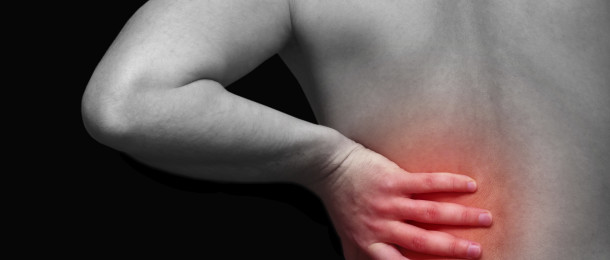
Are you burdened by chronic back pain? You are not alone, back pain is the second most common reason people visit the doctor in the US. If you have reported your pain to your doctor and told that you don’t have an acute injury and are just plagued with back pain that seems to have no cause, then there are easy ways to manage your back pain, so it stops interfering with you being able to lead a happy, productive life. Try one or more of these seven tips to help you manage your chronic back pain.
1. Replace That Stiff Mattress That May Be Making Your Chronic Back Pain Worse
One way that many chronic back pain sufferers unknowingly contribute to their own symptoms is by sleeping on an old mattress or the wrong type of mattress. Years ago, doctors recommended that sufferers of back pain sleep on very firm mattresses. Today, mattress recommendations have changed, and a survey conducted by Harvard Medical School actually revealed that people who slept on the firmest mattresses experienced the worst quality of sleep.
What is the best mattress for back pain? The answer actually varies from person to person. Only super-soft and super-firm mattresses should be avoided. To find the best mattress for you, visit a showroom on a day when your back pain is acting up and choose the mattress type that helps relieve this pain when you lie on it.
2. Choose the Right Computer Chair
Whether you sit at a computer desk all day long while at work or just spend a few hours in the evening browsing social media websites, sitting in the wrong chair can cause your back pain to worsen. Make sure the seat of your chair is cushioned and the back of their chair offers lumbar support.
3. Position Your Computer Properly
You also want to make sure that your computer is properly aligned with your line of vision to keep back pain away. If your computer is too low, then you may hunch your back as you look down at the screen.
Make sure that when you sit down at your computer, you can comfortably view the screen when looking straight ahead. If not, then adjust the height of your computer chair or purchase a new chair or computer desk that allows you to view the screen in a more comfortable fashion.
4. Make Heat Therapy a Habit
There are many easy ways to apply heat to your achy back, and you shouldn’t wait until your back pain is at its worst to do it. Heat relieves pain immediately by disrupting the nerve signals your back is sending to your brain that sense pain. However, it also increases blood flow to your back that aids in healing.
Try a heating pad on a “low” setting when you are at home and try the self-heating pads that you can stick onto your aching back when you are away from home.
5. Try TENS
TENS stands for transcutaneous electrical nerve stimulation, and this therapy has been proven to help relieve back pain. There are small, portable TENS units on the market today that you can use at home.
Similar to heat, the low-intensity electronic impulses the machine sends to your back interferes with the “message” your body is sending to your brain that tells it you are in pain. The mild electric current also causes your brain to produce endorphins, which are your body’s natural pain-killing hormones.
6. Hit the Spice Cabinet and Try Turmeric
If you have ever eaten an Indian curry dish, then you may have already tried turmeric and not even realized it. Turmeric has reached new popularity due to not only its taste, but also its great health benefits.
Turmeric has natural anti-inflammatory properties that make it very beneficial to anyone dealing with chronic pain,including back pain. Just mix 1/4 teaspoon into a small glass of milk or sprinkle it on a meal each day, and you may be surprised at how much pain relief it gives you.
7. Strike a Few Pain-Relieving Poses at a Local Yoga Studio
Strengthening your back muscles can help aid in pain relief as well as gentle stretching of them several times each week. You can help strengthen your muscles while stretching at the same time by performing yoga.
Relieving Chronic Back Pain with Innovative Treatments

The pain from degenerated or slipped discs can bring your daily life to a halt. You may find it difficult or even impossible to bend, lift heavy objects, or sit comfortably. Rather than treat the pain with prescription medications or trying to adjust your life to it, treatment options like disc denervation help with relieving chronic back pain.
What is Disc Denervation?
Disc denervation involves eliminating a nerve’s ability to cause pain. Doctors who specialize in this treatment use radiofrequency to detect what nerves in your back are causing the pain. They then inject a needle to disconnect the nerve.
This procedure has reportedly helped chronic back pain sufferers find relief from months at a time. They no longer have to rely on medications to kill the pain. They are also able to resume their normal range of motion without being compromised by nerve pain.
How is Disc Denervation Performed?
This procedure is done on an outpatient basis and typically only takes an hour to complete. The doctor uses a local anesthetic to deaden the area. People do not feel the injection of the needle or any of the heat or nerve disconnection.
Once the procedure is finished, the doctor then applies a bandage on the affected area. After spending a brief time in recovery, the patient can walk out of the facility and return home to rest.
Who is a Candidate for Disc Denervation?
Many people who have given up hope of ever finding relief from chronic disc pain may be good candidates for disc denervation treatments. Women who have given birth, for example, often develop slipped or degenerated nerves after undergoing epidurals during labor. The epidural needle may have contributed to the disc weakening or slipping out of place.
Further, the weight of carrying a baby can cause discs in a woman’s back to degenerate. Rather than spend the rest of her life with chronic back pain, she may benefit by undergoing nerve denervation.
Likewise, people who have suffered injuries due to falls, lifting heavy objects, or carrying out other tasks may want to consider this treatment option for chronic back pain. They can experience longer lasting relief and also go back to work without being compromised by chronic pain and discomfort.
Finally, people who worry about becoming addicted to painkillers may benefit by going through this operation. Many doctors prescribe powerful medications that help kill the pain of chronic disc degeneration. People who take these medicines, however, may build up a resistance to them and then have to up the amounts that they take to find relief from the pain. Rather than risk becoming addicted to painkillers, sufferers of slipped or degenerated discs may prefer to go through disc denervation.
Before going through this procedure, however, people are encouraged to consult with their primary care doctors to ensure that they are healthy enough to withstand the treatment. If they have conditions like high blood pressure, diabetes, or if they are breastfeeding, they may want to wait or choose another treatment for their chronic back pain.
Chronic back pain no longer requires that people take medicines or simply live with the pain. Sufferers can now go through disc denervation that will disconnect the nerves that are causing their back pain.
If you are reading this on any other blog than Comprehensive Pain Management Center or via my RSS Feed, it is stolen content without credit. You can find us on Twitter via @CompPainMgmt. Come and visit our blog at http://www.compainmc.com/blog/.
Herniated Disk: What It Is and How to Treat It
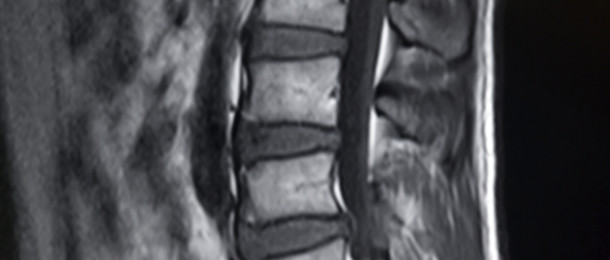
Most people have back pain at some point in their lives. Back pain is one of the most frequent reasons that people are absent from work or go to the doctor. Although it is possible for back to result from many conditions, a herniated disk is one of the more common causes.
What is a Herniated Disk?
Your spine consists of 26 bones. These bones are called vertebrae. In between the vertebrae are soft disks that are filled with a jelly-like material. The disks provide cushioning to the vertebrae. They also help keep them in place. Sometimes, disks degenerate or break down. When the disks weaken, they may rupture. This is known as a herniated disk. A herniated disk allows the jelly-like matter in the middle of the disk to leak out. This can irritate the nearby nerves, causing pain. In addition, it can place pressure on the spinal cord and cause numbness or weakness in a leg or arm. Some people experience no symptoms at all.
What Causes it?
Most of the time, herniated disks are caused by either age-related wear and tear. Over time, spinal disks become less flexible and more prone to rupturing. This is also known as degeneration. In other instances, herniation can be caused by a traumatic event, such as car accident or blow to the back.
How is it Diagnosed?
Your doctor can diagnose a herniated disk with a medical history and a physical exam most of the time. They may order other tests, as well. Here are the most common tests:
Nerve tests
Nerve conduction examinations and electromyograms assess how well electrical impulses move through the nerves. This can help identify if nerves are damaged.
Imaging tests
One of the following tests may be ordered if your physician suspects that another condition might be causing your symptoms or if he or she needs to see which nerves are affected.
- X-rays-Although normal X-rays cannot be used to determine if a disk is herniated, they can be used to determine if your back pain might be due to another cause.
- Computerized Tomography Scan-A CT scan refers to a series of X-rays taken from many different viewpoints. The images are then combined to create a cross-sectional view of the spinal column, as well as the structures surrounding it.
- Magnetic resonance imaging-Also known as an MRI. This test uses a magnetic field and radio waves to generate images of your tissues and organs. An MRI is often used to pinpoint where the herniated disk has occurred and to determine what nerves are involved.
What Treatments are Available?
The primary goal of treatment is to help the patient return to their normal level of activity and relieve pain and other symptoms that result from a herniated disk. Every patient’s treatment plan should be individualized depending on the source and severity of the pain and whether or not they are exhibiting any other symptoms. In most cases, patients start with a course of conservative care prior to considering surgical options. In rare cases, immediate surgical intervention may be needed to prevent more serious symptoms. Conservative treatments for a herniated disk may include:
- Exercise programs or physical therapy
- Massage therapy
- Acupuncture
- Cognitive behavioral therapy
- Bio Feedback
Other treatments for herniated disk include:
- Pain medications
- Epidural injections
- Spinal Surgery
Although disk herniation can be quite disabling, with proper treatment and care, most people completely recover. If you or your primary care physician suspects that you have a herniated disk, seek the advice of a pain management specialist. They can provide you with a range of treatment options to help you return to your previous level of activity.
If you are reading this on any other blog than Comprehensive Pain Management Center or via my RSS Feed, it is stolen content without credit. You can find us on Twitter via @CompPainMgmt. Come and visit our blog at http://www.compainmc.com/blog/.
What are Superior Hypogastric Plexus Injections?
Most doctors believe that chronic pain in the visceral and pelvic regions is often caused by vulvitis, pelvic fibrosis, prostatitis, irritable bowel syndrome, radiation-induced neuropathy, and myofascial pain syndrome. The superior hypogastric plexus is a component of the sympathetic nervous system that is responsible for communicating the pain from the pelvic regions to the central nervous system. By blocking the superior hypogastric plexus with the necessary injections, one can experience substantial pain relief in the visceral and pelvic areas.
What is a Superior Hypogastric Plexus Block?
Commonly referred to as a hypogastric block, a superior hypogastric plexus block is an innovative and minimally invasive procedure that is used to relieve pelvic and genital pain. The uniqueness of this advanced procedure lies in its efficiency in treating pain from a multiple different origins such as the structures of the pelvic region that are innervated by the inferior hypogastric plexus, genitofemoral nerve, superior hypogastric plexus pudendal, celiac plexus, and the inguinal.
How Does the Procedure Work?
Performing the superior hypogastric plexus block is typically a two-step process, especially with patients who are portraying nonmalignant pain symptoms. In most cases, the physician will perform the diagnostic block first, which consist of injecting a local anesthetic such as lidocaine or bupivacaine to access the pain’s response to a block of the superior hypogastric plexus. If the patient is demonstrating a response to the diagnostic block, the physician will then perform the therapeutic block by administering a neurolytic agent like dehydrated alcohol or phenol. Superior hypogastric plexus injections should always be performed under the careful guidance of a well-qualified pain management specialist.
Who is a Good Candidate for the Superior Hypogastric Plexus Block?
Most physicians recommend superior hypogastric plexus injections for those who are continually suffering from severe chronic pelvic pain despite their efforts to relieve the pain through oral medications, physical therapy, and other traditional therapies. Because the procedure is considered to be more effective than a sympathetic block, most patients will experience great relief from the injections for several months. This treatment may also help those who have been diagnosed with pudendal neuralgia.
If you are reading this on any other blog than Comprehensive Pain Management Center or via my RSS Feed, it is stolen content without credit. You can find us on Twitter via @CompPainMgmt. Come and visit our blog at http://www.compainmc.com/blog/.
Disc Denervation Offers Minimally Invasive Back Pain Relief
Back pain is one of the most common types of pain experienced. It is estimated that 80 percent of people in the United States will suffer from back pain at some point in their lives.
One of the most common reasons for pain is the discs that separate the 33 vertebrae in the spine. These discs are soft and provide support to the many bones and nerves that run through the spine. Unfortunately, when one or more of these discs herniate, it results in pain and irritation. Disc denervation is an effective way to treat the pain that results from problems with the spinal discs.
Procedure
A thin needle is first inserted into the skin that provides an anesthetic to numb the skin and underlying tissue. Next, a radiofrequency needle is used under the direction of a real-time x-ray to locate the irritated nerves. A special dye is then used to locate the exact area that is causing the pain. Using the radiofrequency needle, heat is distributed to the correct nerves, causing them to become dull. The needle is then removed from the back and a bandage is placed onto the skin. The entire process takes less than an hour.
Benefits
The procedure is successful in treating back pain in 60 to 70 percent of patients. Those who have success with the procedure experience:
- Increased mobility
- Dramatic improvements in quality of life
- Increased physical function
The procedure is minimally invasive and is done outside of the hospital. Very little recovery time is required and most patients can resume normal activity within days of the procedure. Because real-time x-rays are used to deliver the heat, there is very little risk to other nerves becoming damaged.
Risks
All medical procedures carry some risks, which include bleeding, infection or nerve damage. These risks are rare in disc denervation and have occurred in less than one percent of patients.
Your spine must support your entire body, making it susceptible to damage and pain. Disc denervation can help reduce or eliminate this pain completely, helping you to resume your regular activities once again.
If you are reading this on any other blog than Comprehensive Pain Management Center or via my RSS Feed, it is stolen content without credit. You can find us on Twitter via @CompPainMgmt. Come and visit our blog at http://www.compainmc.com/blog/.
Preventing Back Pain and Discomfort
The American Association of Neurological Surgeons reports that 75 to 85 percent of Americans will experience back pain in their lives, especially in the lower back or lumbar region. While this pain can get debilitating for workers and athletes, there are a number of things you can for preventing back pain and discomfort.
Eat A Healthy Diet
A well-balanced diet can help you in preventing back pain because it reduces inflammation in back muscles and bones. Eat more alkaline foods such as spinach, broccoli, carrots, celery, cantaloupes, berries and almonds. Alkaline foods provide more nutrients and oxygen to your body cells, which can better help you prevent back pain.
Maintain Proper Posture
If you always walk around slump-shouldered or sit in awkward positions a work, you’re given an open invitation to back pain. Hold your shoulders back when you walk and sit up straight at your work cubicle. Invest in an ergonomic chair or equipment.
Avoid Heavy Lifting
Don’t play Superman and try to lift heavy objects, even if you’re young and strong. Get assistance when carrying heavy objects or make multiple trips. When lifting objects off the floor, bend your knees and lift with your legs. Use a lifting belt if you must lift heavier objects at work.
Lose Weight
Extra weight puts more stress on your legs and back, which can cause back pain. Check the recommended weight charts and BMIs for your gender and height. And diet down to a weight more suitable for your frame. Join a weight loss center for assistance or contact your doctor for recommendations.
Exercise On Regular Basis
Perform stretching and resistance exercises for your back several times per week. One stretching exercise is to lie on the floor and pull one leg toward your chest with the other one extended. Alternate legs and repeat ten times. You can also pull both legs to your chest. Strengthen your back by pressing your lower back to the floor with your knees bent. Also, lift your buttocks off the floor while in the same position.
If you make a conscious effort to follow these tips, you can successfully start preventing back pain and discomfort that befalls others who don’t.
If you are reading this on any other blog than Comprehensive Pain Management Center or via my RSS Feed, it is stolen content without credit. You can find us on Twitter via @CompPainMgmt. Come and visit our blog at http://www.compainmc.com/blog/.
Doctor’s Tips for Back Pain
There are millions of people who suffer from back pain. It is so easy to strain the back or get a back injury. For those who suffer from pain, finding relief is essential. Fortunately, the pain can be relieved and even possibly stopped by following a few back pain tips from doctors. These doctor’s tips for back pain are things that are very well known in the medical field and agreed upon by most doctors to really help those suffering from back pain.
Lose Weight
Being overweight puts a lot of strain on the body, especially the back. Extra weight in the stomach area causes a pull on the back, making it go out of alignment and stressing all the muscles in the stomach and back area. By losing some weight and reducing the extra weight being carried in the stomach, natural relief occurs and can greatly reduce any pain felt in the back.
Stop Smoking
It is fairly well-known that smoking causes many health issues., but you may not be aware that it can affect your back. If you have suffered an injury or had surgery on your back, smoking will slow down your body’s ability to heal. Additionally, if you have some type of issue that is progressive, smoking can actually spread up its progression. It is a good idea to quit smoking no matter what, but if you suffer from back issues, stopping smoking could help you to feel much better.
Stay Active
When you are suffering from pain, it may be natural to want to move as little as possible. In some cases, rest is a good thing, but for chronic back pain, being active can actually be much better. For example, stretching the hamstrings daily can go a long ways towards helping relieve back pain. Additionally, aerobic activity helps to improve your cardiovascular health, which in turn gets blood flowing better to injured areas and will help you heal. If your doctor approves, you should be stretching daily and getting some aerobic activity at least three times a week.
Following these three tips for back pain from doctors can go a long way towards helping to reduce or relieve your back pain. Losing weight, stopping smoking and staying active are all things you can do for yourself that will improve your health and help fight back pain.
If you are reading this on any other blog than Comprehensive Pain Management Center or via my RSS Feed, it is stolen content without credit. You can find us on Twitter via @CompPainMgmt. Come and visit our blog at http://www.compainmc.com/blog/.
Yoga Moves To Relieve Back Pain
Yoga has many benefits, but perhaps the biggest benefit is how it can help those who suffer from back pain. Back pain may be caused by many things. More often than not, though, it is a result of tight muscles or weakened muscles in the trunk and legs. Through the use of yoga moves to relieve back pain, you can help to tone and strengthen your muscles so they offer better support for your back and reduce pain.
Area of the Body To Focus On
In order to properly use yoga moves to relieve back pain, you need to understand the areas of the body that need to be worked through the poses. In the lower body, you want to work the hamstrings and the hips. Loosening these areas and increasing blood flow will strengthen them, allowing for healing of any pain that is occurring. You also want to use poses that will increase blood flow and gently stretch your back and stomach muscles.
What To Avoid
Make sure that you avoid any poses that are to complex. The poses you use should be easy and allow you to concentrate on keeping your breath steady throughout the pose. You also do not want to do any move that causes pain. Slight discomfort as you stretch is fine, but pain of any kind is not okay. Finally, make sure that you are doing the poses properly. You may want to attend a yoga class or consult with an expert to learn the poses before starting.
Examples of Poses to Use
There are many different poses that you could use as part of your yoga for back pain routine. Here is a list of poses that are all great for helping with back pain:
*Supine hamstring stretch
*Two-knee twist
*Sphinx
*Pigeon
*Thread the needle
*Legs up the wall
Using yoga for back pain is a great way for you to help relieve nagging pain on your own. It does not take a lot of time to do a few poses each day, but the results can be amazing.




